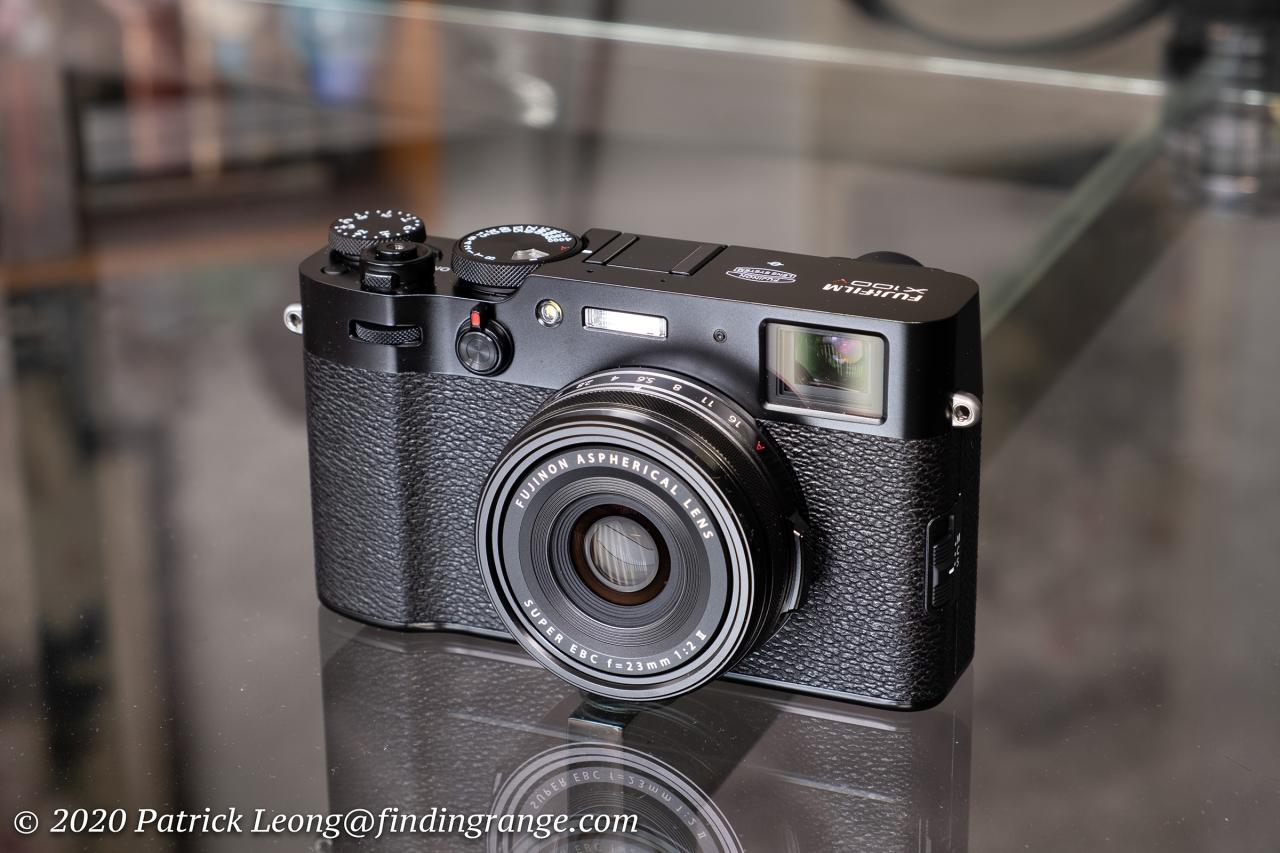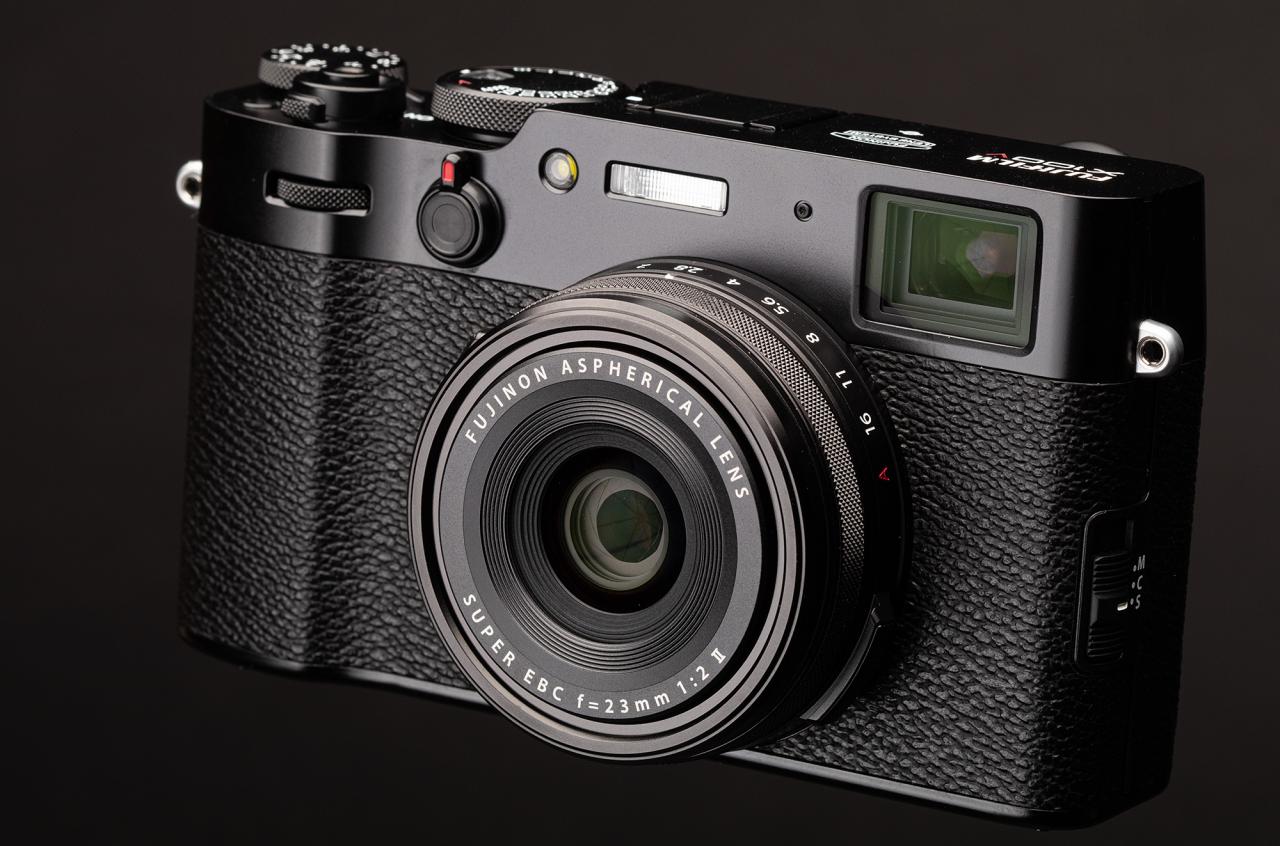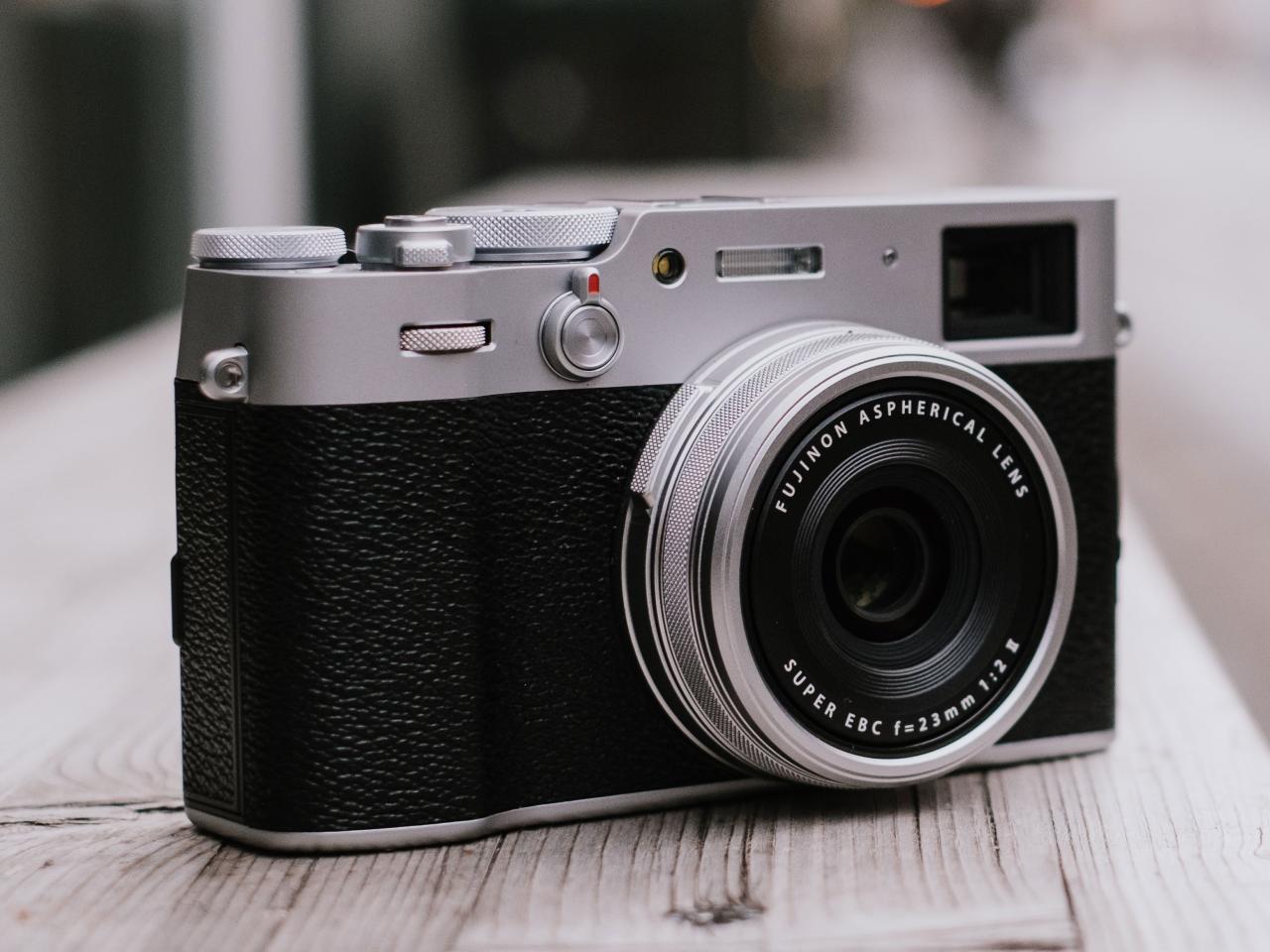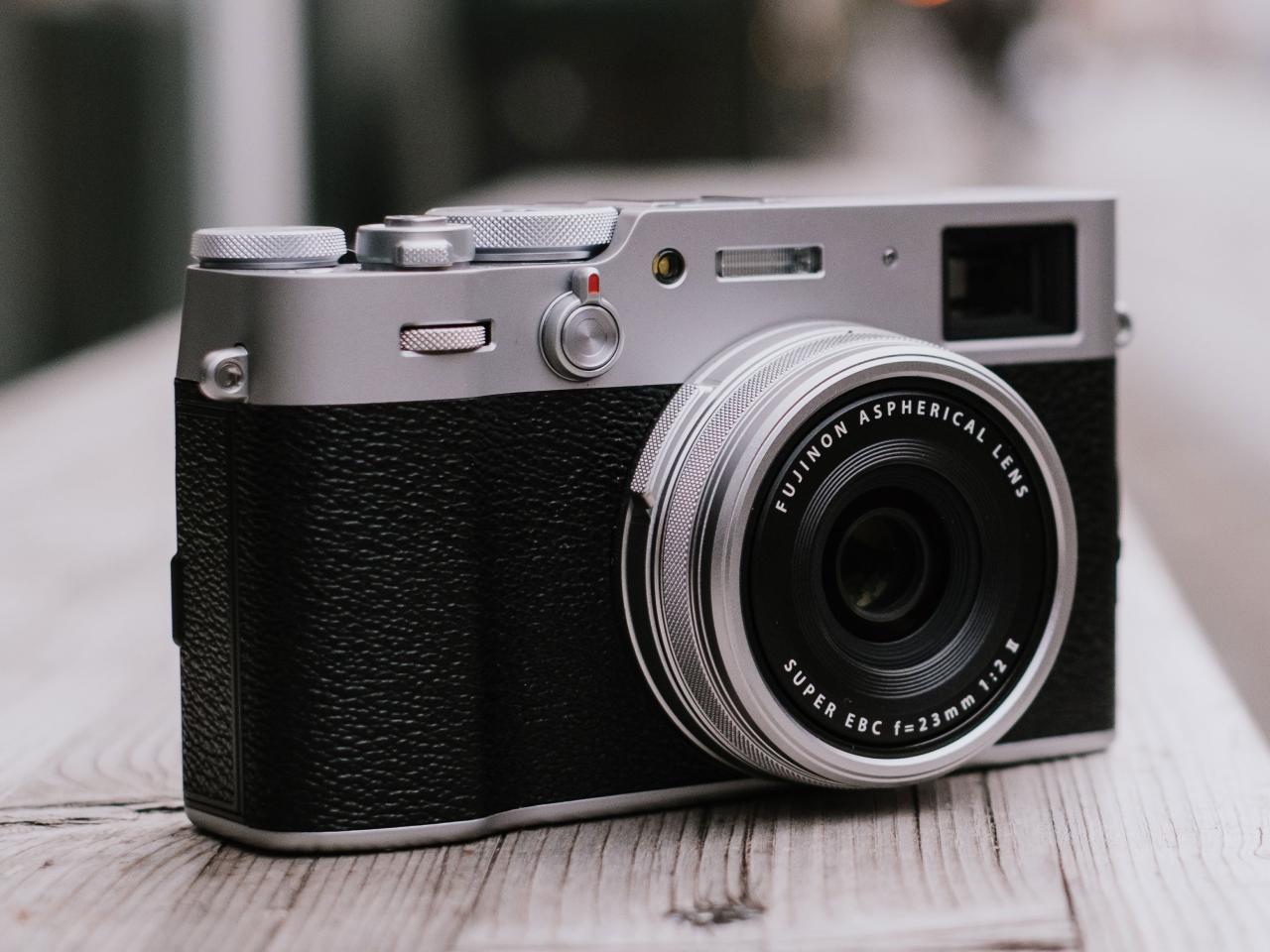The Fujifilm X100V stands as a testament to the enduring appeal of rangefinder-style cameras. Its compact design belies a powerful image sensor and a sophisticated feature set, making it a compelling choice for both seasoned photographers and enthusiastic newcomers. This review delves into the X100V’s capabilities, exploring its image quality, ergonomics, and video performance to provide a comprehensive understanding of this remarkable camera.
From its distinctive retro aesthetics to its advanced autofocus system, the X100V offers a unique blend of classic charm and modern technology. We’ll examine its performance in various shooting scenarios, analyzing image detail, dynamic range, and the impact of Fujifilm’s renowned film simulations. We’ll also compare it to its predecessors and key competitors, highlighting its strengths and weaknesses in a clear and concise manner.
Fujifilm X100V: A Deep Dive into its Features and Performance
The Fujifilm X100V, a compact powerhouse, continues the legacy of its predecessors, offering a compelling blend of retro aesthetics and modern photographic capabilities. This review delves into its various aspects, providing a comprehensive understanding of its strengths and weaknesses.
Camera Features and Specifications

The X100V boasts a 26.1MP X-Trans CMOS 4 sensor, a significant upgrade from its predecessors. This sensor, coupled with the X-Processor 4, delivers exceptional image quality and speed. The autofocus system, utilizing phase detection pixels across the sensor, is remarkably fast and accurate, even in challenging low-light conditions. While not featuring in-body image stabilization (IBIS), its image stabilization relies on the lens’s optical stabilization and advanced processing, resulting in comparatively stable images.
The following table compares the X100V’s specifications to its predecessors:
| Feature | X100 | X100F | X100T | X100V |
|---|---|---|---|---|
| Sensor | 16.3MP APS-C X-Trans CMOS I | 24.3MP APS-C X-Trans CMOS III | 24.3MP APS-C X-Trans CMOS IV | 26.1MP APS-C X-Trans CMOS 4 |
| Processor | EXR Processor II | X-Processor Pro | X-Processor 4 | X-Processor 4 |
| Autofocus System | Contrast Detection | Hybrid (Contrast & Phase Detection) | Hybrid (Contrast & Phase Detection) | Hybrid (Contrast & Phase Detection) |
| Lens | 23mm f/2 | 23mm f/2 | 23mm f/2 | 23mm f/2 |
Image Quality and Performance
The X100V consistently delivers exceptional image quality across various shooting scenarios. Landscapes exhibit vibrant colors and remarkable detail, while portraits capture skin tones naturally with pleasing bokeh. Even in low-light situations, the camera performs admirably, producing images with minimal noise. The camera’s dynamic range is impressive, allowing for recovery of detail in both highlights and shadows. Fujifilm’s renowned film simulations add a unique character to images, allowing for creative control over the final look.
- Strengths: Excellent detail, vibrant colors, good low-light performance, impressive dynamic range, versatile film simulations.
- Weaknesses: Slight chromatic aberration can occur in high-contrast situations, JPEG processing can sometimes oversharpen fine details.
User Experience and Ergonomics
The X100V’s design is a blend of classic and modern aesthetics. Its compact size and solid build quality make it comfortable to hold and use for extended periods. The user interface, while not the most intuitive, is generally easy to navigate once familiarized. The physical controls, including the aperture ring, shutter speed dial, and focus ring, provide a tactile and satisfying shooting experience.
The placement of these controls is well thought out and allows for quick adjustments.
| Feature | X100V | Sony RX100 VII | Ricoh GR III |
|---|---|---|---|
| Dimensions (W x H x D) | 117.8 x 68.2 x 55.0 mm | 101.6 x 58.1 x 28.2 mm | 99.1 x 58.1 x 22.7 mm |
| Weight | 478 g (with battery and memory card) | 290 g | 247 g |
Lens and Functionality

The fixed 23mm f/2 lens (35mm equivalent) is a key feature of the X100V. Its sharpness is exceptional across the frame, with minimal distortion and vignetting. This focal length is versatile, suitable for street photography, landscapes, and portraits. While the fixed focal length might limit versatility for some photographers, it encourages thoughtful composition and mastering a single perspective.
The lens’s performance compares favorably to similar prime lenses from other manufacturers, often exceeding them in image quality at its price point.
Video Capabilities
The X100V offers respectable video capabilities, recording 4K video at up to 30fps and 1080p at up to 120fps. The video quality is good, with accurate colors and detail, although it lacks some of the advanced features found in dedicated video cameras. While not its primary strength, the video functionality is adequate for casual use and short films.
The Fujifilm X100V’s compact size makes it ideal for street photography, capturing candid moments effortlessly. However, even the most skilled photographer might find their focus diverted by unexpected events, such as the recent spate of drone crashes in New Jersey , which highlights the importance of awareness in any photographic endeavor. Returning to the X100V, its image quality remains consistently impressive, making it a reliable choice for diverse shooting situations.
Accessories and Ecosystem
A range of accessories is available for the X100V, enhancing its functionality. These include filters (such as ND filters for controlling light), external flashes for improved lighting in low-light conditions, and various lens adapters. Fujifilm’s own accessories are well-integrated and high-quality, while several reputable third-party manufacturers offer a wider selection.
- Recommended Accessories: A high-quality ND filter for creative control in bright conditions, an external flash for low-light photography, a leather half-case for protection and improved grip.
Comparison with Competitors, Fujifilm x100v

The X100V competes with other high-end compact cameras like the Sony RX100 series and the Ricoh GR series. While the Sony RX100 VII offers a more versatile zoom lens and advanced video capabilities, the X100V excels in image quality and its unique retro design. The Ricoh GR III prioritizes image quality and compact size, offering a different approach to street photography.
The following table provides a brief comparison:
| Feature | Fujifilm X100V | Sony RX100 VII | Ricoh GR III |
|---|---|---|---|
| Sensor | 26.1MP APS-C X-Trans CMOS 4 | 20.1MP 1-inch sensor | 24.2MP APS-C sensor |
| Lens | 23mm f/2 | 24-200mm f/2.8-4.5 | 28mm f/2.8 |
| Price | (Check current market price) | (Check current market price) | (Check current market price) |
The Fujifilm X100V emerges as a highly versatile and capable camera, offering exceptional image quality and a delightful shooting experience. Its compact size and retro styling make it a joy to carry and use, while its advanced features cater to a wide range of photographic needs. While the fixed lens might limit some users, the overall performance and image quality make it a strong contender in the premium compact camera market.
The Fujifilm X100V’s compact size and exceptional image quality make it ideal for street photography, capturing candid moments with ease. For planning shots, however, checking the weather conditions beforehand is crucial, and a quick glance at the port dover live camera can be invaluable. This allows you to anticipate lighting and adjust your Fujifilm X100V settings accordingly, ensuring perfectly exposed images every time.
Whether you’re a street photographer, landscape enthusiast, or simply appreciate a beautifully crafted piece of photographic equipment, the X100V is certainly worth considering.
FAQ Insights
What is the battery life like on the Fujifilm X100V?
Battery life is generally considered average for a camera of this type. Expect around 350-400 shots on a single charge, depending on usage.
Does the Fujifilm X100V have weather sealing?
No, the Fujifilm X100V does not offer weather sealing.
Can I use external microphones with the Fujifilm X100V?
Yes, the X100V has a 3.5mm microphone jack for external audio recording.
What is the maximum ISO for the Fujifilm X100V?
The maximum ISO is 51200.
